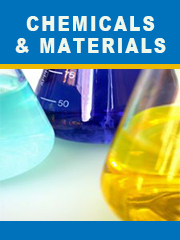Report overview
Acetone cyanohydrin is manufactured by the reaction of acetone and hydrogen cyanide in presence of water solutions such as KOH and NaOH. Tthe intermediate product however, is unstable in alkaline solution and hence is treated with sulphuric acid until its pHreaches 1-2. Acetone cyanohydrin is used as an intermediate product for manufacturing methylacrylates, methacrylamide, methacrylic acid and methacrylonitrile among others.?
This report aims to provide a comprehensive presentation of the global market for Acetone Cyanohydrin, with both quantitative and qualitative analysis, to help readers develop business/growth strategies, assess the market competitive situation, analyze their position in the current marketplace, and make informed business decisions regarding Acetone Cyanohydrin. This report contains market size and forecasts of Acetone Cyanohydrin in global, including the following market information:
Global Acetone Cyanohydrin Market Revenue, 2018-2023, 2024-2032, ($ millions)
Global Acetone Cyanohydrin Market Sales, 2018-2023, 2024-2032, (K MT)
Global top five Acetone Cyanohydrin companies in 2022 (%)
The global Acetone Cyanohydrin market was valued at US$ million in 2022 and is projected to reach US$ million by 2029, at a CAGR of % during the forecast period. The influence of COVID-19 and the Russia-Ukraine War were considered while estimating market sizes.
The market for acetone cyanohydrinwas driven by substantial demand from methylmethacrylate. industry. Methylmethacrylate is further polymerized into polymethylmethacrylate (PMMA). PMMA is used in various end-user industries such as electronics & electrical, signs and displays, medical & healthcare, automotive, building & construction, waste management and water treatment industries, among others. Electronics & electrical was one of the major industries for PMMA in the past decade. Another major outlet for acetone cyanohydrins was insecticides where it is used as a raw material. Acetone cyanohydrin is used to manufacture ethyl alpha-hydroxyisobutyrate, a pharmaceutical intermediate. In addition, acetone cyanohydrins are also used in the metal separation process in the form of a complexing agent.In spite of this variety of applications, acetone cyanohydrin is usually considered as potentially hazardous chemical as it releases hydrogen cyanide when in contact with water. These environmental and health regulations associated with acetone cyanohydrins ?in North America and Europe can have major impact on the market and is likely to hinder the growth of the acetone cyanohydrin market during the forecast period.?
MARKET MONITOR GLOBAL, INC (MMG) has surveyed the Acetone Cyanohydrin manufacturers, suppliers, distributors and industry experts on this industry, involving the sales, revenue, demand, price change, product type, recent development and plan, industry trends, drivers, challenges, obstacles, and potential risks.
Total Market by Segment:
Global Acetone Cyanohydrin Market, by Type, 2018-2023, 2024-2032 ($ Millions) & (K MT)
Global Acetone Cyanohydrin Market Segment Percentages, by Type, 2022 (%)
Agriculture Grade
Industrial Grade
Military Grade
Global Acetone Cyanohydrin Market, by Application, 2018-2023, 2024-2032 ($ Millions) & (K MT)
Global Acetone Cyanohydrin Market Segment Percentages, by Application, 2022 (%)
Electronics & Electrical
Medical & Healthcare
Automotive
Building & Construction
Water Treatment Industries
Others
Global Acetone Cyanohydrin Market, By Region and Country, 2018-2023, 2024-2032 ($ Millions) & (K MT)
Global Acetone Cyanohydrin Market Segment Percentages, By Region and Country, 2022 (%)
North America
US
Canada
Mexico
Europe
Germany
France
U.K.
Italy
Russia
Nordic Countries
Benelux
Rest of Europe
Asia
China
Japan
South Korea
Southeast Asia
India
Rest of Asia
South America
Brazil
Argentina
Rest of South America
Middle East & Africa
Turkey
Israel
Saudi Arabia
UAE
Rest of Middle East & Africa
Competitor Analysis
The report also provides analysis of leading market participants including:
Key companies Acetone Cyanohydrin revenues in global market, 2018-2023 (Estimated), ($ millions)
Key companies Acetone Cyanohydrin revenues share in global market, 2022 (%)
Key companies Acetone Cyanohydrin sales in global market, 2018-2023 (Estimated), (K MT)
Key companies Acetone Cyanohydrin sales share in global market, 2022 (%)
Further, the report presents profiles of competitors in the market, key players include:
Dow
Arkema
BASF
Evonik
Kuraray
Mitsubishi Gas Chemical
Formosa Plastics
Sumitomo Chemical
Asahi Kasei
Sinopec
Outline of Major Chapters:
Chapter 1: Introduces the definition of Acetone Cyanohydrin, market overview.
Chapter 2: Global Acetone Cyanohydrin market size in revenue and volume.
Chapter 3: Detailed analysis of Acetone Cyanohydrin manufacturers competitive landscape, price, sales and revenue market share, latest development plan, merger, and acquisition information, etc.
Chapter 4: Provides the analysis of various market segments by type, covering the market size and development potential of each market segment, to help readers find the blue ocean market in different market segments.
Chapter 5: Provides the analysis of various market segments by application, covering the market size and development potential of each market segment, to help readers find the blue ocean market in different downstream markets.
Chapter 6: Sales of Acetone Cyanohydrin in regional level and country level. It provides a quantitative analysis of the market size and development potential of each region and its main countries and introduces the market development, future development prospects, market space of each country in the world.
Chapter 7: Provides profiles of key players, introducing the basic situation of the main companies in the market in detail, including product sales, revenue, price, gross margin, product introduction, recent development, etc.
Chapter 8: Global Acetone Cyanohydrin capacity by region & country.
Chapter 9: Introduces the market dynamics, latest developments of the market, the driving factors and restrictive factors of the market, the challenges and risks faced by manufacturers in the industry, and the analysis of relevant policies in the industry.
Chapter 10: Analysis of industrial chain, including the upstream and downstream of the industry.
Chapter 11: The main points and conclusions of the report.
